October 8, 2023
國慶日快樂! (Guóqìng rì kuàilè!) Happy National Day! It was a four-day weekend, and I was thinking about making a post that was not too difficult. On a whim, as I was dressing, I decided to go to Bitan (碧潭), on the Xindian River near International House.
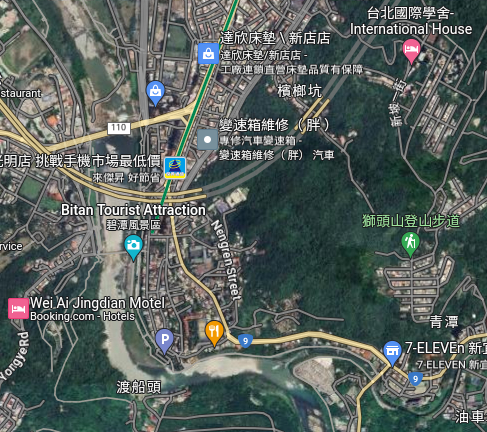
The Google map above shows Bitan as very close; I’ve walked there before. However, it was raining (though the temperature I estimated was in the high 20’s), so I went via bus to Qizhang MTR Station and then a short train ride to Xindian MRT Station.

Bitan, meaning “Green Pool” in Chinese, is just across the narrow road from Xindian MRT Station.
New Taipei City Travel says: “Taiwan’s Xindian Bitan Scenic Area was already popular during the Japanese colonial period. In 1927, Taiwan Daily News launched a poll of “Eight Scenic Views of Taiwan” for all readers, which was the craziest readers’ poll in Taiwan’s history. Eventually, readers selected eight scenic views, twelve attractions, and two special spots, which included Xindian Bitan. Therefore, it can be seen as one of the leading scenic areas in Northern Taiwan. In recent years, the popularity of hiking in Taiwan has grown, and Bitan, with Hemei Mountain on its left and Shitou Mountain on its right, has become a good choice for urban residents to get closer to the mountains.”
There are many YouTube clips of Bitan. The above is of a person walking from Xindian MRT Station, as I did, exploring Bitan and Xindian Old Street, early in the morning.

Just down from Xindian MRT Station there is a traditional market (above). Somewhat unusually there is a road running through this market.

In the middle of this traditional market is the above structure, a high bridge support for the Bitan Suspension Bridge.
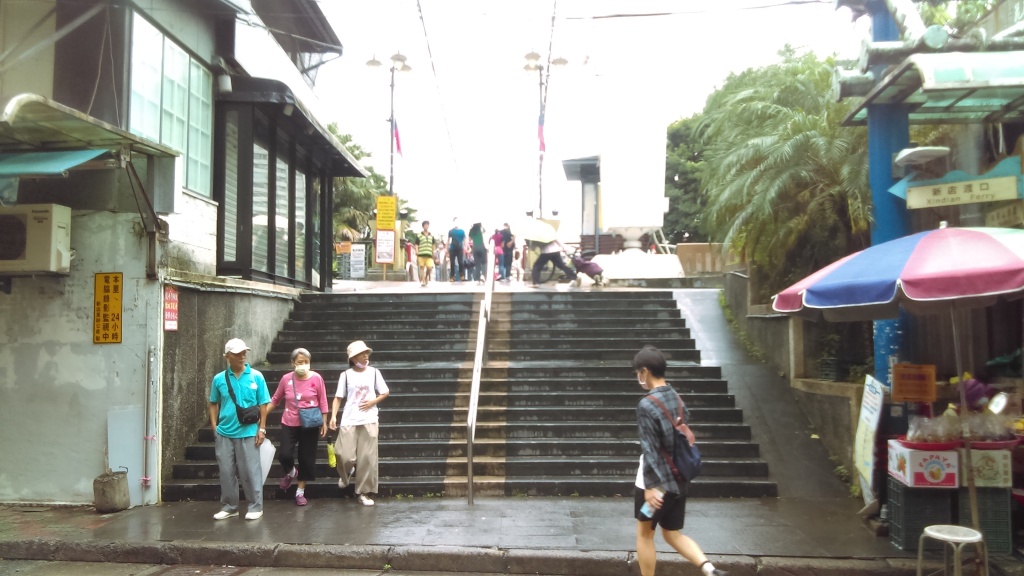
A close-up of the bridge support. The people in the background are just stepping out on the Bitan Suspension Bridge proper.
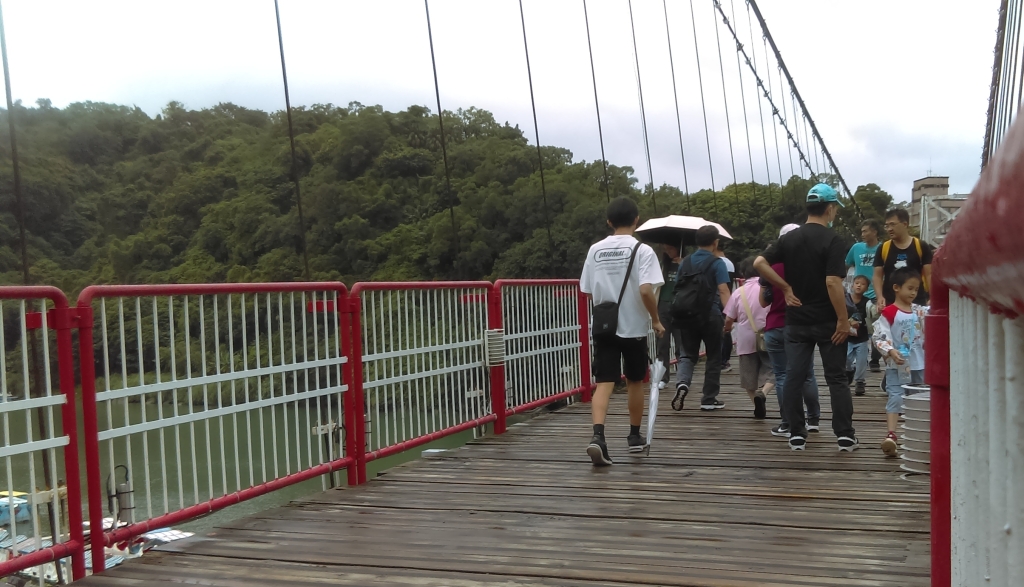
On the Bitan Suspension Bridge. Note the planks on which we walked. The Bridge trembled constantly.
New Taipei City Travel says: “The Bitan Suspension Bridge, completed and opened in 1937, is a landmark bridge for tourism in Xindian, and even the concept of the emblem of the Xindian District Office is based on its design. This 30-meter-high and 200-meter-long bridge is a popular choice for dating couples”.
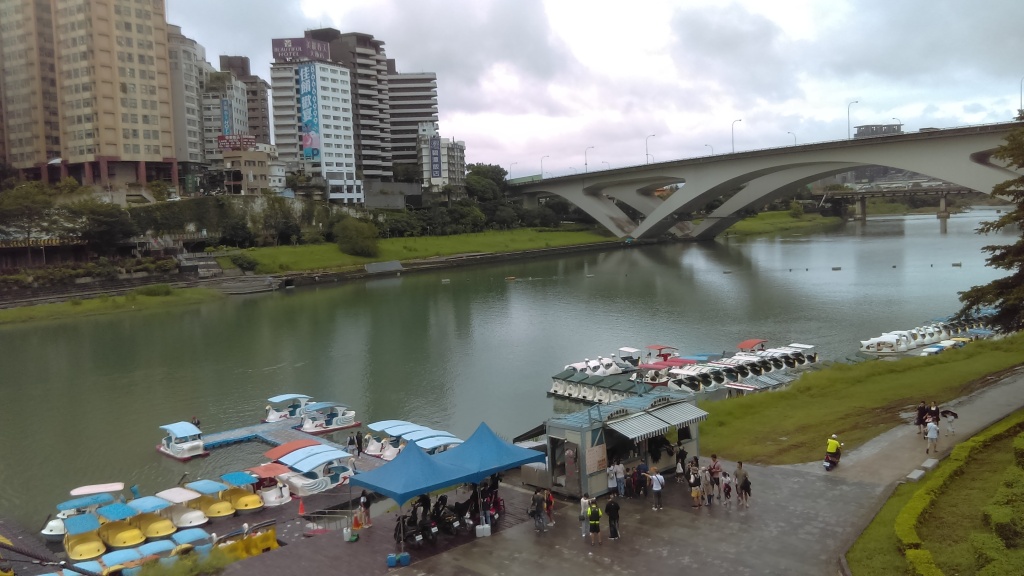
Quite a view from the Bridge. The hut in the lower center of the above photo is where the boats are hired.
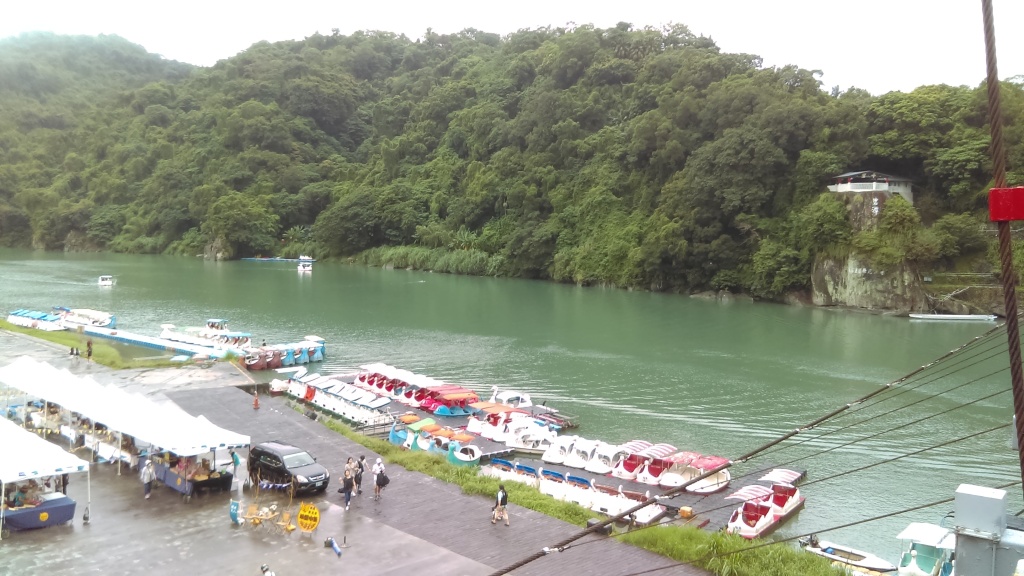
The view over to the south side, showing the boats also moored ready for hire.
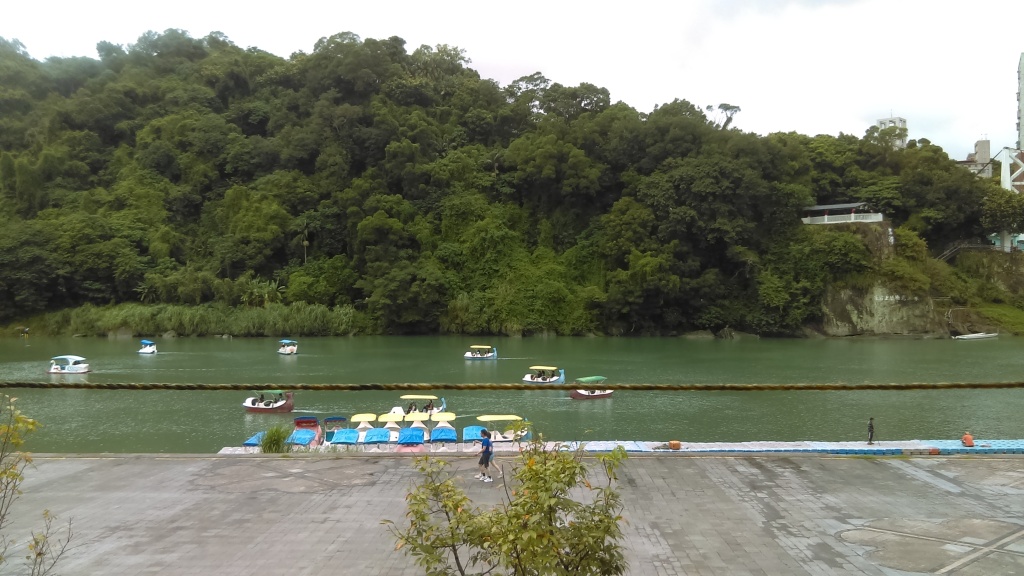
New Taipei City Travel says: “After crossing the Bitan Suspension Bridge, people can enter Hemei Mountain on the left side. The curious rocks on the mountain wall facing Bitan are magnificent, so it is also called the ‘Little Red Cliff.'” In the photo above, presumably that area is on the extreme right, with the observation deck above, and writing in the center of the little cliff.
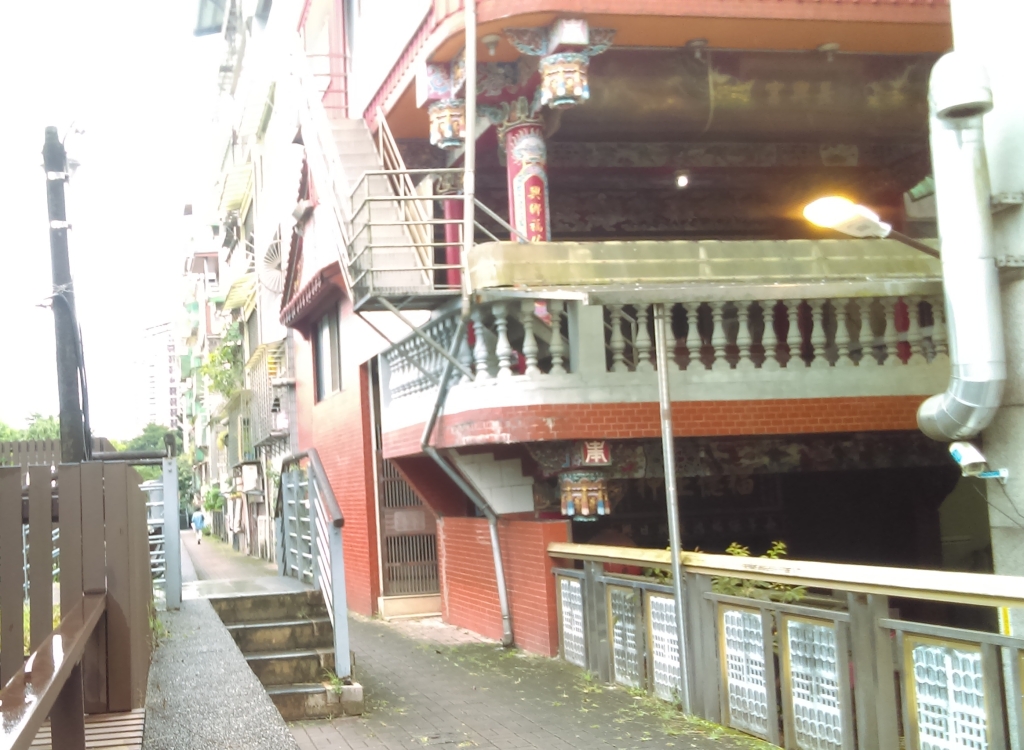
Between the traditional market to the right, and Bitan to the left, there is a temple (above), squeezed into a narrow block. It looks like the temple’s designers ran out of space on the ground, so they added an extra storey.
On the Internet, the descriptions of this temple are all in Chinese. Google Maps lists this temple as 新店長興宮 – perhaps “Xindian Long-Prospering Temple”; Google translates it as “Changxing Palace”. The temple has a Facebook page, which translating from the Chinese says there are actually three associated temples in Taipei. Academia Sinica, likewise in Chinese, says it’s a Daoist temple, and the chief deity is “Tutu Gong”; Teacher Lu says that’s the name of the Earth God.
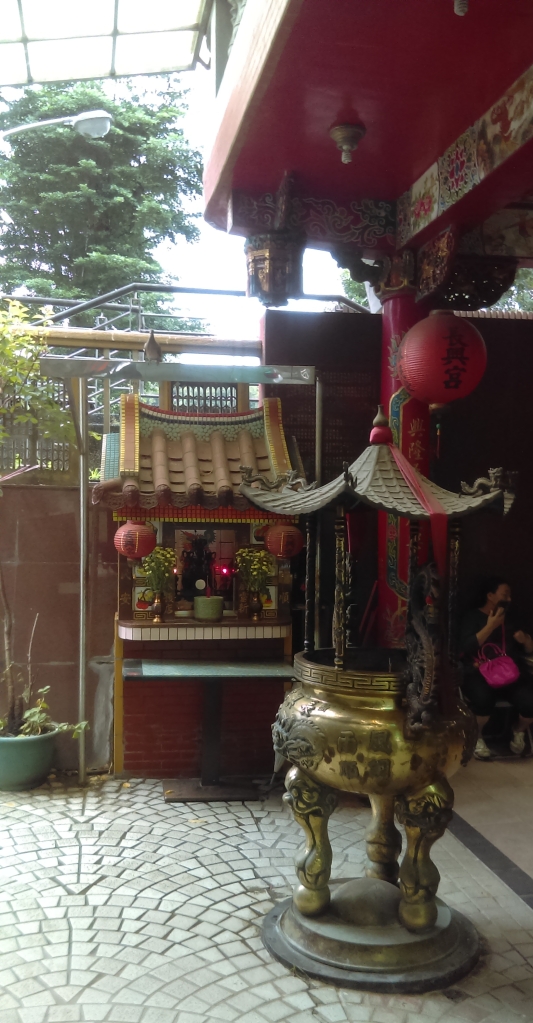
Inside the temple, looking back up to where I’d taken the previous photo. Apart from the prominent entrance-way just out of shot to the right, there was a large cauldron filled with incense sticks, a subsidiary shrine, and a few people hanging out.
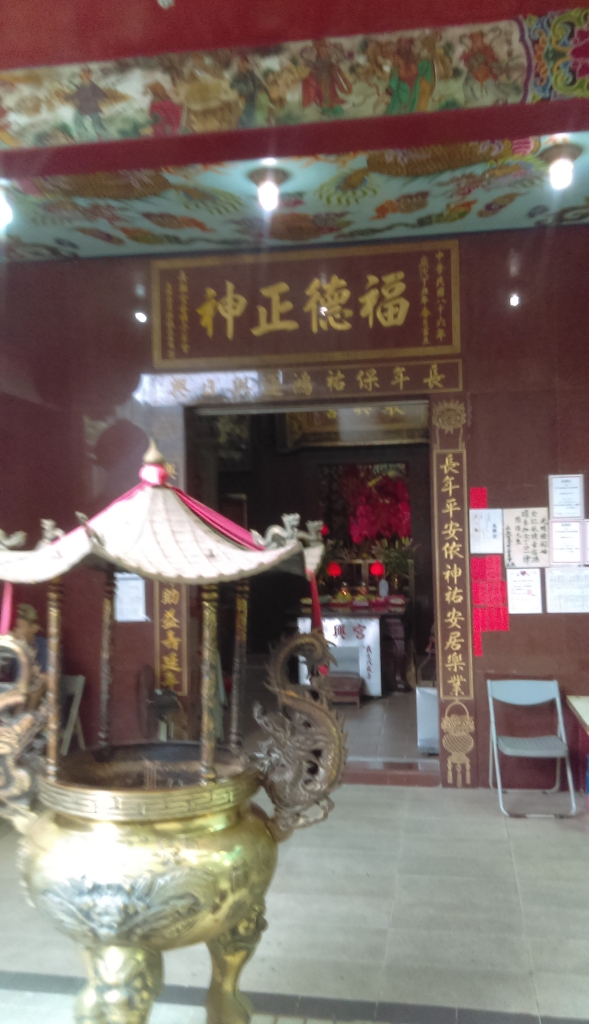
In this photo I’ve turned 90 degrees to the right, showing the entrance-way. Teacher Lu very kindly translated the Chinese writing flanking the door. On the right side of the doorway, very roughly, the writing says if you worship gods then you will live safely with gods’ blessing; the left side is mostly obscured but the end is roughly “long and healthy life”.
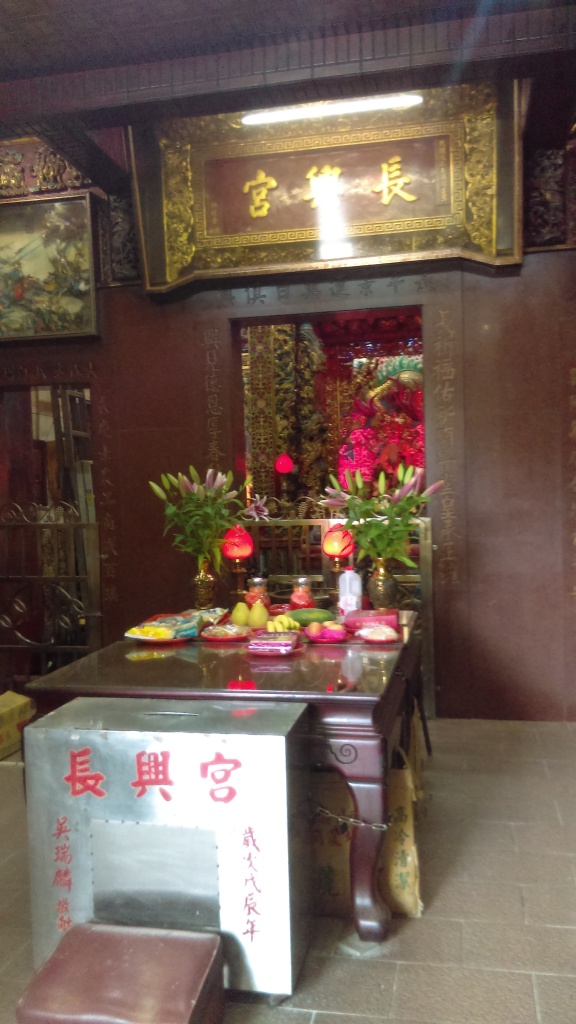
A photo of the innermost sanctum, taken in a quick shot leaning in at the entrance-way. In the center is a statue of the Earth God, Tutu Gong, according to Teacher Lu. The Chinese writing on the wall translates as “Long-Prospering Temple”.

I felt a little hungry, so I went to the Waterfront area. There were a long row of restaurants with high prices. This cafe attracted me, with a sign (in Chinese) saying “coffee”, and a gleaming coffee machine.

But what made me order from this shop was the sign advertising Bundaburg fruit juices, complete with Australian flag and kangaroo.

I ordered a pork hamburger (above) and a mango ice-cream. The pork in the pork burger was firm and meaty. The ice-cream looked exactly like the photo on the wall of the shop. Total cost 240元 ($AUD 12).
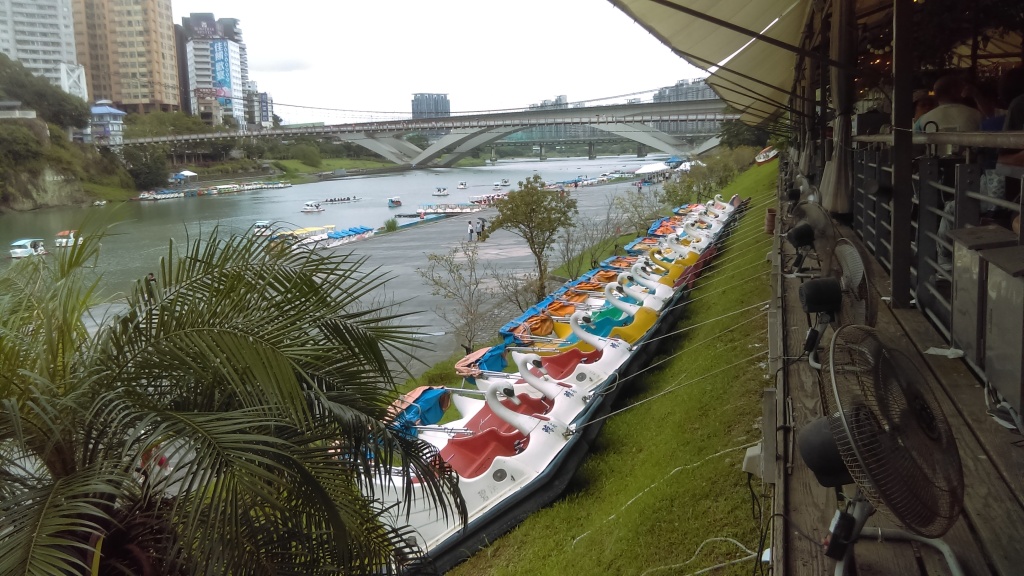
While I was eating I admired the view. Incidentally, New Taipei City Travel says: “The Xindian Ferry on the south side of the Hemei Mountain hiking trail is the last ferry in Bitan. Before the Bitan Suspension Bridge opened, the residents of Xindian River relied on the ferry to travel between the two sides of the river. In its heyday, there were nine ferries. However, the function of the ferry has been gradually replaced as the construction of land transportation methods improved. Today, the ferry from Wantan to Xindian Street, where boatmen carry passengers and shuttle leisurely on the Bitan River, is the only one that remains.”
Then I went back to Xindian Old Street and purchased a meal for dinner at International House. It’s a pity I didn’t think to photograph this, but in the YouTube clip above you can see something of Xindian Old Street. Then I caught the train home.